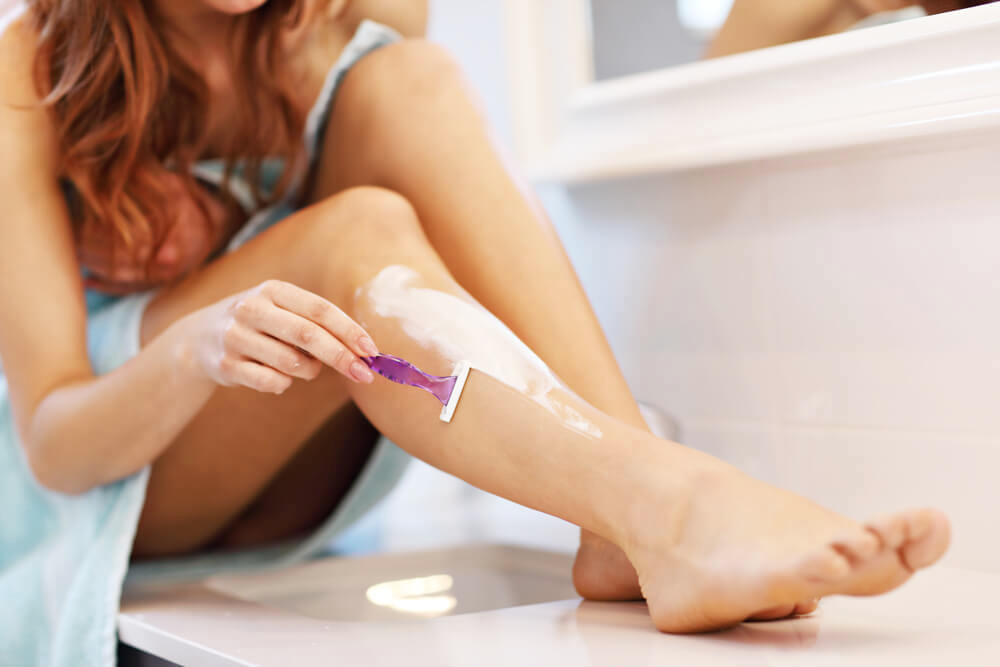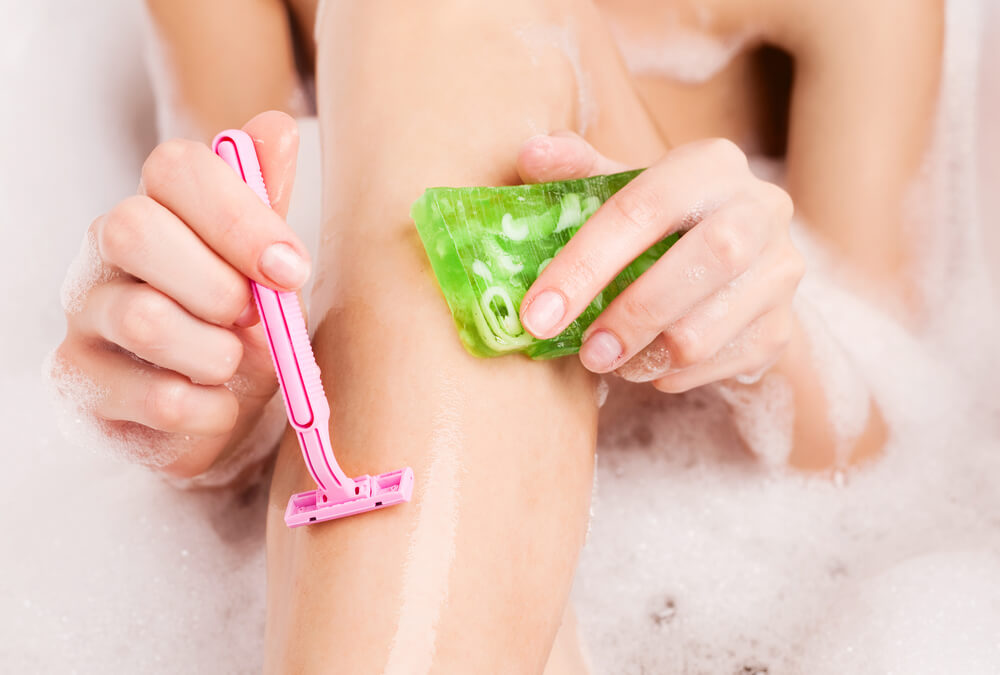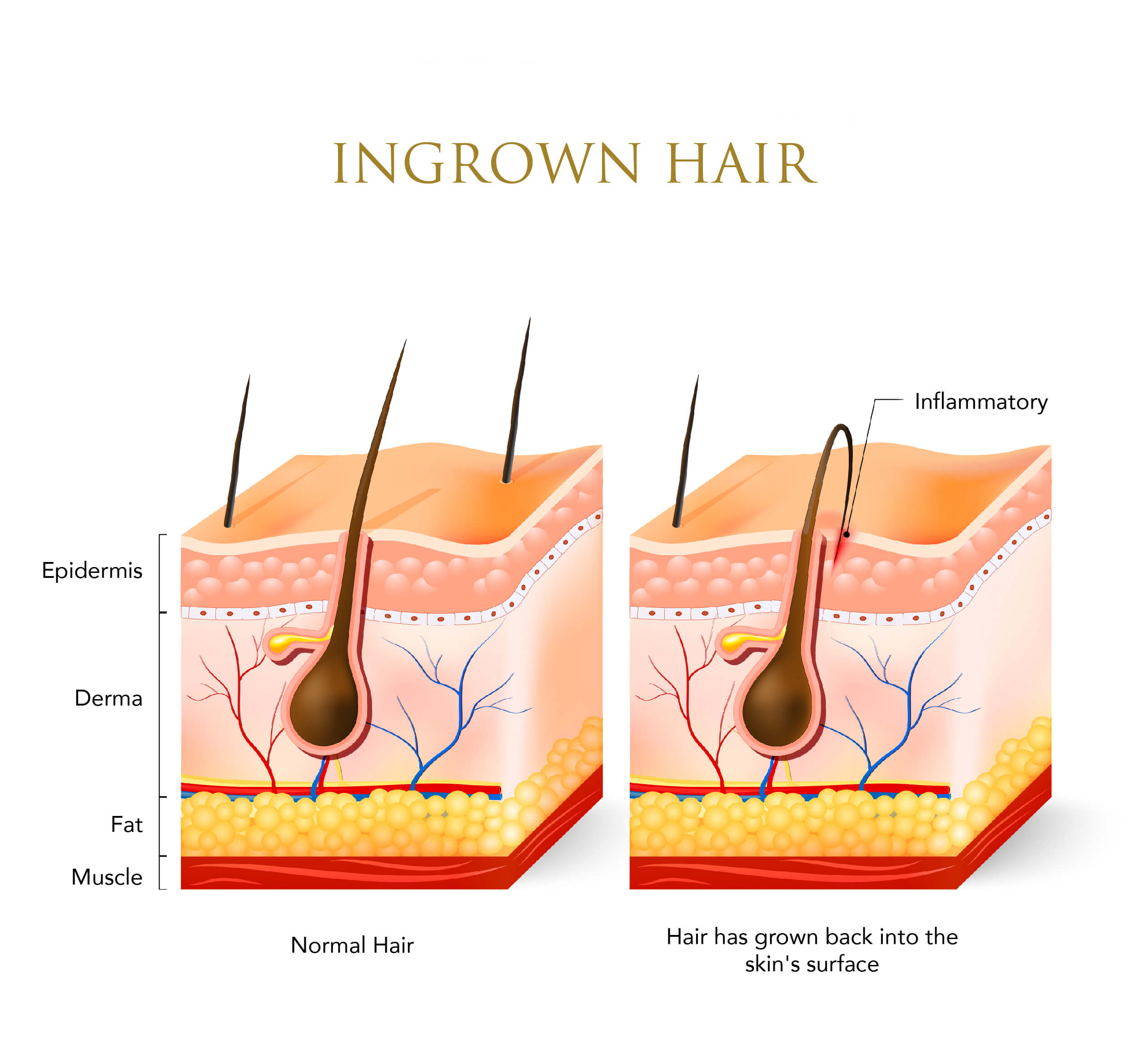The Anatomy of Razor Burn

Shaving is a hair removal technique that dates back to prehistoric times, with even the earliest cave paintings, from over 30,000 years ago, depicting men with smooth, hair-free faces.
Today, shaving remains the most common hair removal method out there, and for good reason too! It is quick, pain-free and easy to do on both the face and the body, making it no surprise that so many people around the world opt for a razor when it comes to removing unwanted hair.
Of course, there is always a downside…
In the case of shaving, razor burn can often be a side effect. Painful and irritating, nobody wants to be dealing with razor burn.
Fortunately, once you understand the anatomy of a razor burn, it becomes so much easier to not only treat your skin when this happens, but also to prevent razor burn from occurring in the first place.
What is Razor Burn?
So, what exactly is razor burn?
It is a skin condition that can develop after an area of the skin has been shaved. While those with sensitive skin tend to be more susceptible to razor burn, it can happen to just about anyone.
How do you know if you have razor burn?
The symptoms usually include:
- A stinging or burning sensation on a part of your skin that has just been shaved
- Redness and irritation
- Increased sensitivities
Wondering why razor burn develops to begin with?
To properly understand this, you need to also have an understanding of your skin’s different layers…
Understanding Your Skin

Your skin consists of three main layers:
- Epidermis – the outermost layer, responsible for protecting the skin with a waterproof barrier
- Dermis – this middle layer is where your hair follicles, sweat glands and connective tissues live
- Hypodermis – the deepest layer of skin consists mainly of connective tissue and fat cells
However, many would argue that there is actually a fourth layer too…
Known as the stratum corneum, this layer sits right at the edge of the epidermis, essentially forming the outermost layer of your skin.
It consists of dead skin cells, which your skin is constantly shedding.
This may not sound very pleasant, but the stratum corneum is key when it comes to protecting the delicate layers of skin beneath. This layer is much tougher than the rest of your skin, making it more resilient.
Your stratum corneum varies in thickness – areas such as your hands and feet contain around 50 layers of dead skin cells, while other parts of your body contain between 12 and 16. The more fragile areas, such as your eyelids, contain just nine.
What does this have to do with razor burn?
Because each time you shave, in addition to cutting away your hairs, your razor also removes some of your stratum corneum. It is basically a mild form of exfoliation, removing just a few of your dead skin cell layers each time.
However, if your razor ends up taking off too many of those layers, this is where razor burn sets in…
Razor Burn and Over-Exfoliation
Razor burn is basically a form of over-exfoliation.
This means that the newer and more fragile layers of skin, along with their nerves, are now being exposed to the environment, likely before they were actually ready to be.
This is why a razor burn feels so tender and raw, as the skin in this area no longer has any protective layers over the top of it.
What Causes Razor Burn?
Now that you know what razor burn is, you are probably wondering what actually causes it…
After all, it only happens sometimes!
Well, there are actually several different factors that can lead to razor burn, but, fortunately, they are all relatively easy to prevent:
1) Your Razor is Dull
With a sharp razor, you will be able to achieve a clean shave with just one swipe.
However, a dull razor will likely require you to go over the same area of skin a few times in order to cleanly shave those hairs away.
This is when the problems begin…
Each time you run your razor over your skin, you are removing some of your stratum corneum. Do this too many times and you completely clear away that protective layer of skin, leaving the vulnerable skin beneath exposed.
All of those extra strokes also lead to tiny micro-abrasions in the skin that can quickly become irritated, or even infected. This will only make your razor burn even worse.
A dull blade will also encourage you to press down harder on your skin with your razor. This then removes a significant amount of your protective stratum corneum.
Fortunately, there’s an easy fix to this…
All you need to do is make sure that your razor blade is sharp each time you use it!
It is worth investing in a quality razor if you regularly shave, as these will usually come with better blades.
2) Your Skin is Too Dry
You probably already know that your skin needs to be wet before you shave it.
If you have ever tried dry shaving, then you also likely know that this can be extremely uncomfortable and painful. It doesn’t take long for the skin to become itchy, flaky and dull after it has been shaved dry.
Why is this?
Well, when your skin is wet, this helps to hydrate your hairs. It causes them to swell and soften, meaning that your razor can cut away at them without having to tug at them in any way.
You don’t have those benefits when you shave dry, and all of that extra friction and irritation can lead to razor burns.

However, soaking your skin for 30 seconds or so isn’t going to be enough to hydrate those hairs…
You need to hydrate your skin, with warm rather than cold water, for at least three minutes before you begin shaving. This is the optimum time for your skin and your hairs to properly soften, and will go a long way in helping to prevent razor burn from developing.
In addition to making sure that your skin is hydrated, you should also always use some sort of lubricant on your skin when shaving. This is especially important for those who have sensitive skin.
A shaving cream or gel is ideal for this, as they form an addition barrier between your skin and the razor blade, preventing the blade from removing too much of your stratum corneum.
Don’t have a shaving cream or gel to hand?
Try your hair conditioner, as this will work in the same way.
3) Your Skin is Not Clean
It is so important that you properly cleanse your skin before you begin shaving.
Why?
Because sitting on the surface of your skin is dirt, oil, dead skin cells and more, all of which will get in the way of your razor when you are running the blade over your skin.
Rather than being able to smoothly glide over your skin, your razor will experience quite a bit of friction, resulting in razor burn.
A gentle cleanser is all you need to use before shaving.
Wondering if you should exfoliate too?
If you are prone to razor burn, then no. As mentioned above, shaving itself is a mild form of exfoliation, with razor burn being a sign of over-exfoliation. If you are trying to prevent razor burn from occurring, then you do not want to be adding any additional exfoliants into the mix.
One more thing to keep in mind…
In addition to ensuring that your skin is clean, make sure that your razor is clean too.
If your razor is holding onto any dirt or bacteria, this will also cause friction when you run the blade over your skin, increasing your chances of experiencing razor burn.
4) You Are Shaving Against the Grain
Yes, shaving against the grain does give you a much closer shave, but this can also be so irritating to sensitive skin.
Why?
Because going against the grain causes friction on your skin, along with additional stress as the razor roughly pulls at each hair. For skin that is already prone to sensitivities, this can simply be too much, resulting in razor burn appearing.
You can probably guess what the easy fix to this one is…
Try shaving with the grain, rather than against it.
If you are using a quality razor and are properly hydrating your skin before you begin shaving, it should still give you a close and smooth shave, but without the accompanying razor burn.
5) You Are Using the Wrong Blade
9Do you use a single blade or a multiple blade razor when shaving?
Multiple blade razors tend to be more popular, as they give you a closer and smoother shave. They also tend to get the job done so much faster.
This can actually help to prevent razor burn for some people, but can have the opposite effect on others…
Do you have sensitive skin?
If so, you may find multiple blade razors much more irritating. This could be what is causing your razor burn, as your sensitive skin is simply not able to handle all of those blades running over it.
Try switching to a single blade razor and seeing if that makes a difference.
Razor Bumps Are Different
Many people often confuse the two terms, especially since razor bumps can accompany razor burn, but razor burn and razor bumps are actually two completely different conditions.
What are razor bumps?
This is a condition also known as pseudofolliculitis barbae, or ingrown hairs. It refers to the hairs growing back incorrectly after they have been shaved – rather than growing straight out, it turns and grows back into the skin.

This results in small red bumps that can sometimes be mistaken for pimples.
Razor bumps tend to occur more in people who have curly hair. Since their hair has a natural curl, this can cause it to turn backwards while it is growing, causing it to re-enter the skin.
Treating Razor Burn
You may be promising yourself to keep those above tips in mind for the future, but what do you do if you are already dealing with razor burn?
Don’t worry, there are several steps that you can take to treat this uncomfortable condition:
- Apply a cold compress – this can simply be a washcloth that has been soaked in cold water and then held over your razor burn. This should help to keep inflammation and redness down, while also easing the pain
- Keep your skin moisturized – since razor burn is a sign that your skin has been over-exfoliated, you need to give your skin some extra protection until it is able to heal and protect itself once again. The best way to do this is by keeping your skin well moisturized, as a moisturizer forms a thin layer over the surface of the skin, reinforcing the stratum corneum
- Use soothing ingredients – ideally, you want to be using soothing, cooling and calming ingredients on your skin, and preferably ones that encourage and speed up skin healing. Try aloe vera, chamomile, cucumber or calendula – each one is natural and mild, but extremely powerful
- Give your skin time to heal – your skin needs some time to heal from a razor burn, and it will usually do this naturally on its own. However, you need to make sure that you do not shave that part of your skin until it has fully healed. Instead, wait until there are absolutely no more signs of inflammation or redness
Razor burn can be quite a painful skin condition, and it can definitely be frustrating when this is something that occurs on a regular basis. This is why it is so important to understand the anatomy of a razor burn, as this will make it so much easier to prevent the condition from occurring in the future.

